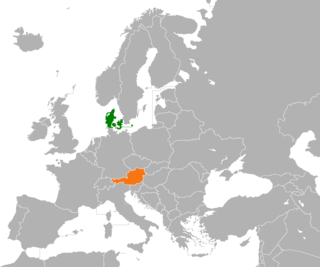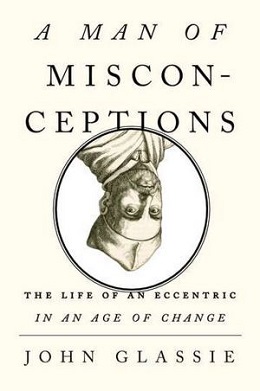Related Research Articles

The Acropolis of Athens is an ancient citadel located on a rocky outcrop above the city of Athens, Greece, and contains the remains of several ancient buildings of great architectural and historical significance, the most famous being the Parthenon. The word Acropolis is from Greek ἄκρον (akron) 'highest point, extremity' and πόλις (polis) 'city'. The term acropolis is generic and there are many other acropoleis in Greece. During ancient times the Acropolis of Athens was also more properly known as Cecropia, after the legendary serpent-man Cecrops, the supposed first Athenian king.

The Parthenon is a former temple on the Athenian Acropolis, Greece, that was dedicated to the goddess Athena. Its decorative sculptures are considered some of the high points of classical Greek art, and the Parthenon is considered an enduring symbol of Ancient Greece, democracy, and Western civilization.

1687 (MDCLXXXVII) was a common year starting on Wednesday of the Gregorian calendar and a common year starting on Saturday of the Julian calendar, the 1687th year of the Common Era (CE) and Anno Domini (AD) designations, the 687th year of the 2nd millennium, the 87th year of the 17th century, and the 8th year of the 1680s decade. As of the start of 1687, the Gregorian calendar was 10 days ahead of the Julian calendar, which remained in localized use until 1923.

1759 (MDCCLIX) was a common year starting on Monday of the Gregorian calendar and a common year starting on Friday of the Julian calendar, the 1759th year of the Common Era (CE) and Anno Domini (AD) designations, the 759th year of the 2nd millennium, the 59th year of the 18th century, and the 10th and last year of the 1750s decade. As of the start of 1759, the Gregorian calendar was 11 days ahead of the Julian calendar, which remained in localized use until 1923.

1753 (MDCCLIII) was a common year starting on Monday of the Gregorian calendar and a common year starting on Friday of the Julian calendar, the 1753rd year of the Common Era (CE) and Anno Domini (AD) designations, the 753rd year of the 2nd millennium, the 53rd year of the 18th century, and the 4th year of the 1750s decade. As of the start of 1753, the Gregorian calendar was 11 days ahead of the Julian calendar, which remained in localized use until 1923.

The Ashmolean Museum of Art and Archaeology on Beaumont Street in Oxford, England, is Britain's first public museum. Its first building was erected in 1678–1683 to house the cabinet of curiosities that Elias Ashmole gave to the University of Oxford in 1677. It is also the world's second university museum, after the establishment of the Kunstmuseum Basel in 1661 by the University of Basel.

Athanasius Kircher was a German Jesuit scholar and polymath who published around 40 major works of comparative religion, geology, and medicine. Kircher has been compared to fellow Jesuit Roger Joseph Boscovich and to Leonardo da Vinci for his vast range of interests, and has been honoured with the title "Master of a Hundred Arts". He taught for more than 40 years at the Roman College, where he set up a wunderkammer or cabinet of curiosities. A resurgence of interest in Kircher has occurred within the scholarly community in recent decades.
The year 1957 in archaeology involved some significant events.
Below are notable events in archaeology that occurred in 1921.
Below are notable events in archaeology that occurred in 1920.
The decade of the 1690s in archaeology involved some significant events.
The decade of the 1660s in archaeology involved some significant events.
The decade of the 1640s in archaeology involved some significant events.
The decade of the 1600s in archaeology involved some significant events.

Foreign relations exist between Austria and Denmark. Austria has an embassy in Copenhagen and Denmark has an embassy in Vienna. Both countries are full members of the Council of Europe, of the Organisation for Economic Co-operation and Development, and of the European Union. Diplomatic relations were established on 19 December 1925.

Plastered human skulls are human skulls covered in layers of plaster and typically found in the ancient Levant, most notably around the modern Palestinian city of Jericho, between 8,000 and 6,000 BC, in the Pre-Pottery Neolithic B period. They represent some of the oldest forms of art in the Middle East and demonstrate that the prehistoric population took great care in burying their ancestors below their homes. The skulls denote some of the earliest sculptural examples of portraiture in the history of art.

A Man of Misconceptions: The Life of an Eccentric in an Age of Change is a biography written by John Glassie about Athanasius Kircher, a 17th-century German Jesuit scholar, scientist, author, and inventor. Published by Riverhead Books in 2012, it is regarded by The New York Times as the first general-interest biography of Kircher, who has experienced a resurgence of academic attention in recent decades.

Titia Brongersma was a Frisian poet of the late 17th century. Her book, De bron-swaan, was published in 1686 and is virtually the only trace of her literary activity. She also gained prominence for excavating a dolmen at Borger, Netherlands in 1685.

China Illustrata is a book published in 1667 by the Jesuit Athanasius Kircher (1602–1680). Principally drawn from accounts of the Jesuit China Mission, it compiles 17th-century European knowledge on the Ming-era Chinese Empire and its neighboring countries.
References
- ↑ "The largest Hunebed". HunebedCentrum. 2012. Archived from the original on 2014-11-01. Retrieved 2014-11-01.
- ↑ Ashmolean Museum AN1836.479.
- ↑ "Parthenon". britannica.com. Retrieved 15 June 2017.
- ↑ "Athanasius Kircher". Yale University Library. Retrieved 20 June 2017.